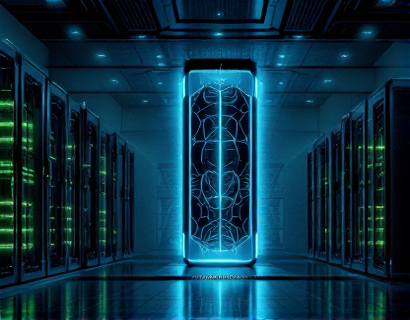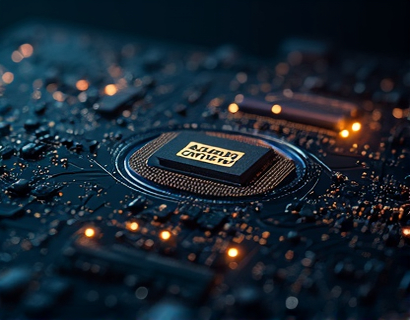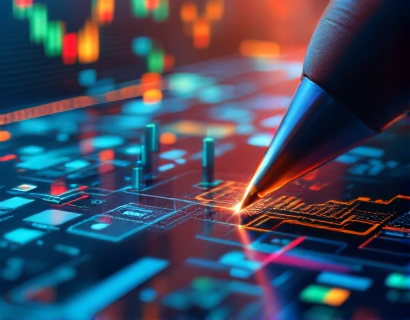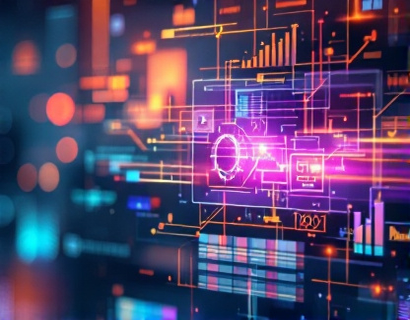Decentralized Innovation: Unleashing Next-Gen Digital Transformation with AI and Crypto Synergy in the Digital Ecosystem
The digital landscape is undergoing a profound transformation, driven by the synergistic power of artificial intelligence (AI) and cryptocurrency. This revolution is not just about adopting new technologies but about reimagining the very fabric of how we interact, transact, and innovate online. At the heart of this transformation is the concept of decentralized innovation, which promises to unlock unprecedented levels of efficiency, security, and user empowerment. This article delves into how the convergence of AI and crypto is reshaping the digital ecosystem, creating a new paradigm for next-generation digital transformation.
Decentralized innovation refers to the development and deployment of technologies and applications that operate on decentralized networks, primarily blockchain. Unlike traditional centralized systems, decentralized systems distribute control and data across a network of nodes, eliminating single points of failure and enhancing transparency. This decentralized approach is inherently aligned with the principles of blockchain technology, which ensures immutability, traceability, and security through cryptographic means.
The integration of AI into decentralized systems amplifies their potential, creating a powerful duo that can drive significant advancements in various sectors. AI's ability to process vast amounts of data, learn from patterns, and make intelligent decisions complements the transparency and security offered by blockchain. Together, they form a synergy that can revolutionize industries ranging from finance and healthcare to supply chain management and beyond.
Enhancing Security and Trust
One of the most compelling aspects of decentralized innovation is its ability to enhance security and trust in digital transactions. Traditional centralized systems are vulnerable to hacks, data breaches, and fraud, as they rely on a single entity to manage and protect data. In contrast, decentralized systems distribute data across multiple nodes, making it extremely difficult for malicious actors to compromise the entire network. Each node maintains a copy of the data, and any attempt to alter the information requires consensus from the majority of nodes, ensuring data integrity.
Blockchain's cryptographic algorithms further fortify this security framework. Every transaction is encrypted and linked to the previous transaction, forming an unbreakable chain. This not only prevents tampering but also provides a transparent and auditable trail of all activities. For instance, in the financial sector, decentralized finance (DeFi) platforms leverage blockchain to offer secure, transparent, and censorship-resistant financial services. These platforms eliminate intermediaries, reducing costs and increasing accessibility for users worldwide.
Improving Efficiency and Automation
AI and blockchain together can significantly improve operational efficiency and automation. Smart contracts, self-executing contracts with the terms directly written into code, are a prime example of this synergy. Deployed on blockchain networks, smart contracts automatically execute, control, or document legally relevant events and actions without the need for intermediaries. This automation reduces manual errors, speeds up processes, and lowers transaction costs.
In supply chain management, AI-driven analytics combined with blockchain can provide real-time visibility and traceability. Each step in the supply chain, from production to delivery, is recorded on the blockchain, ensuring transparency and accountability. AI algorithms can analyze this data to predict bottlenecks, optimize routes, and enhance overall supply chain efficiency. For example, a logistics company can use AI to forecast demand and adjust inventory levels accordingly, while blockchain ensures that all transactions and movements are securely and transparently recorded.
Empowering Users and Decentralizing Power
Decentralized innovation fundamentally shifts the power dynamics in digital ecosystems, empowering users and reducing reliance on centralized authorities. In traditional models, users often have limited control over their data and are subject to the rules and policies of central entities. Decentralized systems, however, give users ownership and control over their data, allowing them to decide how and with whom to share it.
Identity management is a critical area where this empowerment is evident. Decentralized identity solutions enable users to create and manage their digital identities without relying on third-party providers. These solutions use blockchain to store identity attributes in a secure and verifiable manner, giving users the ability to prove their identity and authenticate transactions without exposing sensitive information. This not only enhances privacy but also reduces the risk of identity theft and fraud.
Fostering Innovation and Collaboration
The decentralized ecosystem fosters a culture of innovation and collaboration, encouraging developers and entrepreneurs to build on existing blockchain platforms and protocols. This open-source approach accelerates the development of new applications and services, as developers can leverage pre-built components and frameworks. The community-driven nature of decentralized projects also promotes collaboration, with contributors from around the world working together to improve and expand the ecosystem.
Crypto tokens and incentives play a crucial role in this collaborative environment. They can be used to reward contributors, incentivize participation, and align interests among stakeholders. For instance, in decentralized governance models, token holders can vote on proposals and decisions, ensuring that the development of the platform is aligned with the community's goals and values. This democratic approach not only enhances transparency but also fosters a sense of ownership and commitment among users.
Challenges and Considerations
While the potential of decentralized innovation is vast, it is essential to acknowledge the challenges and considerations that come with this new paradigm. Scalability remains a significant issue for many blockchain networks, as they struggle to handle high transaction volumes efficiently. Solutions such as layer 2 protocols and sharding are being developed to address these scalability concerns, but they require further refinement and adoption.
Regulatory uncertainty is another challenge, as governments and regulatory bodies are still grappling with how to oversee decentralized systems. The lack of clear regulations can create legal ambiguities and hinder widespread adoption. However, as the benefits of decentralized technologies become more apparent, there is a growing movement towards creating frameworks that balance innovation with consumer protection and financial stability.
The Future of Digital Transformation
The synergy between AI and decentralized technologies is poised to drive the next wave of digital transformation, reshaping industries and redefining user experiences. As these technologies continue to mature and gain traction, we can expect to see more innovative applications and services that leverage their combined strengths. From smart cities and autonomous vehicles to personalized healthcare and educational platforms, the possibilities are endless.
The future is decentralized, intelligent, and interconnected. By embracing this new paradigm, we can unlock a more secure, efficient, and user-centric digital world. The journey ahead is exciting, and those who stay informed and adapt to these changes will be well-positioned to thrive in the evolving digital landscape.











































